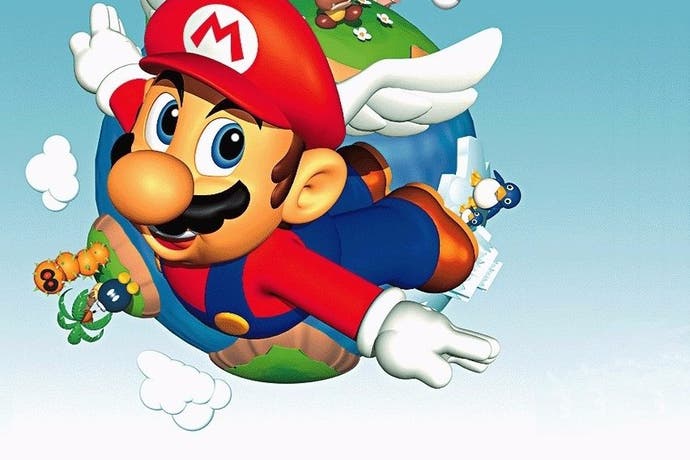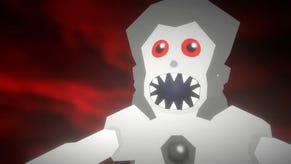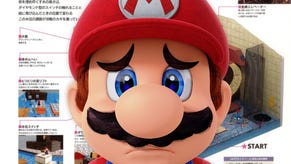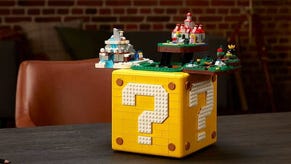What made Super Mario 64 so special?
Star man.
The Wii U re-release of Super Mario 64 seems like the perfect time for a retrospective, especially when you realise it's been nearly 20 years since its release in 1996. But there's something about the idea of a retrospective that doesn't quite fit this game. Hindsight is often ahistorical, free of the day-to-day chatter and contemporary context. A pioneering work like Super Mario 64, on the other hand, is impossible to divorce from its context because those same factors made it more than a great game.
Super Mario 64 was not the first 3D game by a long shot, and not even the first 3D platformer. The game seems like a pioneer because it became the template for true 3D design - and so is now something of a legendary creation. The problem is that a lot of the accepted wisdom about the making of Mario 64 turns out to be either exaggerated or untrue, and even the things we can be sure of are pretty vague.
The N64's launch was not pushed back solely so that Miyamoto could finish his masterpiece: Nintendo claimed the delay was to 'mature' software, but the initial run of hardware had performed below expectations. It is also said that the N64's unique controller was built solely around the game's demands: the pad was being prototyped at the time Mario 64 was being made, and so it (among others) was used for a lot of testing. The mess of correlation and causality, when myth gets involved, is hard to disentangle.
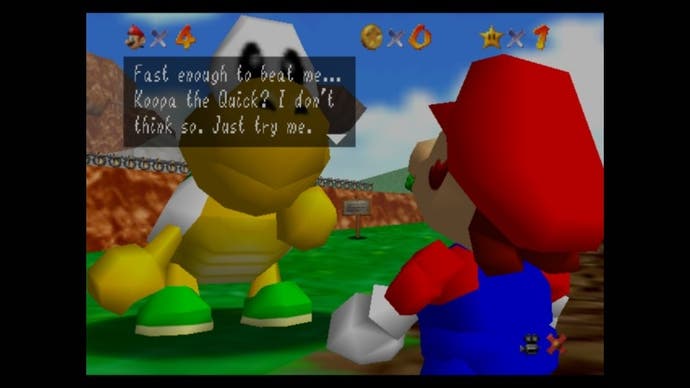
But myth exists for a reason, and there's often truth behind it. Super Mario 64 was made by around 15 people, including Shigeru Miyamoto, and one of the most oft-told stories is that in the opening stretch of development all that existed was a moving cuboid, which soon enough was animated and became Mario - more or less as he is in the final product. Depending on which source you read, Miyamoto spent months and months just playing with this character in an open space, or a garden, or early level prototypes, with nothing else to do but move. Soon there were various objects Mario could pick up and throw around, and soon there was a rabbit - nicknamed MIPS after the N64's CPU. Miyamoto obsessed over catching the rabbit, using the feel of the chase to fine-tune controls that had already been fine-tuned countless times before.
We may catch glimpses, but Nintendo HQ is like Willy Wonka's Chocolate Factory: no outsider knows what is truth and what is legend. But in the case of Mario's movement several individuals who worked on the game have given similar accounts (check out ex-NGC and NGamer editor Mark Green's interview with Giles Goddard here), and there is a far more important aspect. Anyone that has played Super Mario 64 will instantly intuit that this story about the game's origins is, regardless of the specific details, fundamentally true. You can feel it.
Mario 64 is a game built on first principles. What Mario embodies, and the reason he has always been so compelling to control, is a set of universal laws: mass, momentum, and inertia. But Nintendo's designers are even smarter than this. Among Super Mario Bros' many innovations was the genius touch of building up speed, and this speed affecting your jumps - a piece of 'realistic' physics that is then added to by the 'unrealistic' ability to control the character in mid-air. Mario has always meant perpetual motion, but his creator also likes to bend the rules so this never becomes a drag.
Super Mario 64 is such an important 3D game because it was the first that was a joy to control. And I mean real joy - not good, not visually impressive, and not just well-animated. The move from 2D to 3D in games was at the time almost seen as an binary switch - with magazines wondering when 2D games would die out - and this is why Super Mario 64 came to be seen as so important. It was the first 3D game that actually felt as good to play as a 2D game, where the basics of movement had been established and iterated upon for decades.
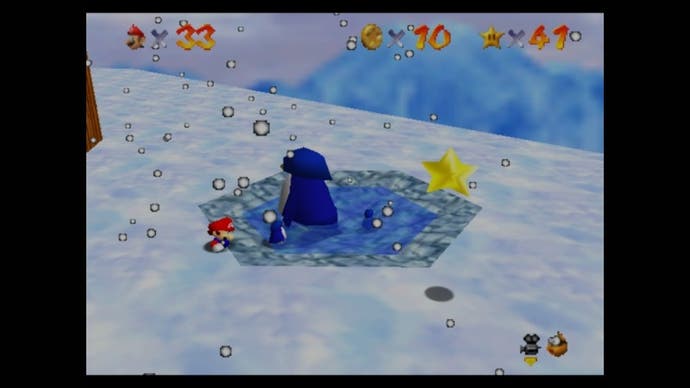
It may seem like I'm over-emphasising something myself: the importance of first principles. But consider how Super Mario 64 is often credited with 'translating' Mario into 3D, and then consider this. 2D Mario games move from left-to-right to reach a goal zone, Mario 64 has open environments with goals placed at different points therein. Completing a level is no longer about moving through the scenery, but exploring it. The 2D Mario games progressed linearly - World 1's levels in order, then World 2's levels in order, with warp pipes and whistles letting experienced players bypass sections. The goal stars in Mario 64 allow progression to become more diffuse, which in turns allows the game's structure to be more open. A big challenge in 2D Mario games is the enemies, and hence power-ups are focused on killing or avoiding them. The big challenge in Mario 64 is navigation, and so the power-ups are focused exclusively on movement.
This is not translation of any kind so much as complete reinvention. After all, why do levels need fixed goals? Why should you have to complete one before trying another? Why do you even need to finish them all to finish the game? The hub world of Princess Peach's castle is itself one of the game's largest levels - crammed with paintings, plenty of rooms to explore, and more secrets than most players will ever know. It's no mistake Super Mario 64 starts the player off in the grounds, letting them feel the simple joy of making Mario run, jump and climb in his new playground.
The many worlds are (mostly) accessed through the brilliant conceit of jumping into paintings, and this playfulness shows how intertwined Super Mario 64 and that idea of first principles is. You don't choose where to go from a menu, but by doing what the game is best at - jumping. The first world, Bob-Omb Battlefield, has a twisting hill at its centre which spills down into the huge open space where Mario begins. You can't fall off the edge in this world, allowing players to toy around with basic jumping and platforms without any real danger - the main obstacles are bouncing goblets of water and steep inclines. Giant balls roll down hills and goombas waddle around, but this playground is filled with toys - posts to hammer into the ground, a half-pipe of balls, flowers and butterflies - that are nothing to do with challenge.
This sense of playfulness is what comes from starting with play. Super Mario 64 is often praised for getting the player into the game quickly, with an intro inviting Mario to Peach's castle and showing off the scenery in around a minute, but in fact play starts the second you switch the N64 on - with that great big Mario face you can pull and twang around using the analogue stick.
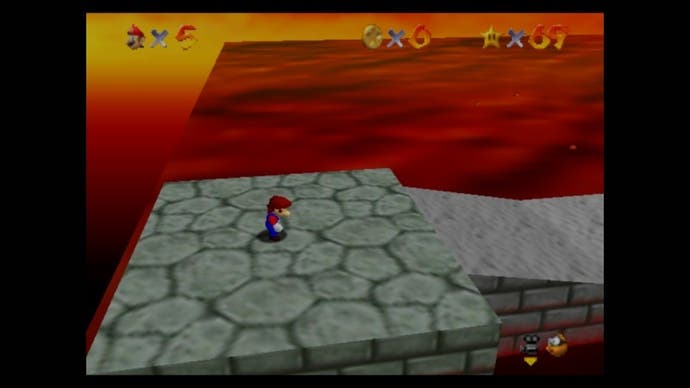
Just because something is unnecessary does not mean it's unimportant. So much of Mario 64 is like that opening splash of the star man's face: almost incidental, or a joke, or used for a single star and then forgotten. Bop a koopa out of its shell and, rather than booting or grabbing it, Mario can now jump on top and start surfboarding. Cold, Cold Mountain has a mother penguin looking for her baby penguin at the bottom, and a bogus baby penguin right next to her. For the next star you race a Penguin down a slide and, if you take the secret route to guarantee a quick victory, it tells you off for cheating and withholds the prize. Cold, Cold Mountain itself, after Bob-Omb Battlefield and Whomp's Fortress, is about going downhill fast rather than climbing up. The nature of 3D space allows new illusions and surprises: a neverending staircase to nowhere, a level hidden within a ghost, a secret world found by looking at the sun. Tiny-Huge world has two entrance paintings, one tiny and one huge, and the one you choose dictates Mario's size in the level.
My personal favourite trick, though it seems mean to call it that, is finding a room where the wall is a huge mirror - and for the first time since the game's opening, seeing Lakitu floating behind Mario holding the game's 'camera.' Who knows how many developers would have considered this immersion-breaking, or an unnecessary frill, when the impact is exactly the opposite: it somehow makes this 3D space feel even more real, more 'there,' more completely realised.
After defeating Bowser for the first time, Mario gains a key that gives him access to the basement. Head down there and you'll find a familiar rabbit - MIPS lives on, and runs away from Mario on sight. You don't get any prompts, but the instinctive reaction is to give chase. MIPS is not an easy catch. Bouncing around these narrow corridors, long-jumping to build instant momentum, and diving at angles to cut off the bunny becomes an all-consuming passion for a minute or two. And when you do grab MIPS, and the game rewards you with one of the castle's secret stars, you realise Nintendo's team built a structure that could accommodate anything. Why shouldn't you progress for having fun?
This attitude is why, unlike every 3D contemporary, Mario 64 is still fun to play now. So many classics become history pieces and, magnificent as its games often are, Nintendo is not immune. Certain things in Mario 64 stick out: the simple textures mean the bright visuals have aged well, but the use of 2D sprites for 3D objects like coins and balls can be a little jarring. The level tunes, though great, are re-used throughout.
But inhabiting Mario, even after Sunshine and the Galaxies and 3D World's refinements, is still an absolute pleasure - like a favourite pair of old trainers. Nevermind that this is the true beginning for 3D architecture, constructions overflowing with imagination (a clock interior!) that re-configure their elements for each challenge. Mario carries absolutely everything with a freewheeling jump and a whoop, while you are swept along grinning.
If Mario is the key, one particular quality suggests where all Miyamoto's time went. Mario in the 2D games could jump, run and accelerate, alongside a few power-up moves. 3D Mario can run, jump, double jump, triple jump, long jump, backflip, sideflip, wall-jump, ground-pound, hop up from his belly, punch and dive. It is not that each of these moves is a delight in itself to execute, but that they either feed into each other or can be used to break out of one another. You can chain jumps together, flip off walls and add in long-jumps without ever slowing down, dive forwards from the air and instantly flip upright on landing into a sprint, long-jump over thin-air and at the precise moment ground-pound onto a tiny target.
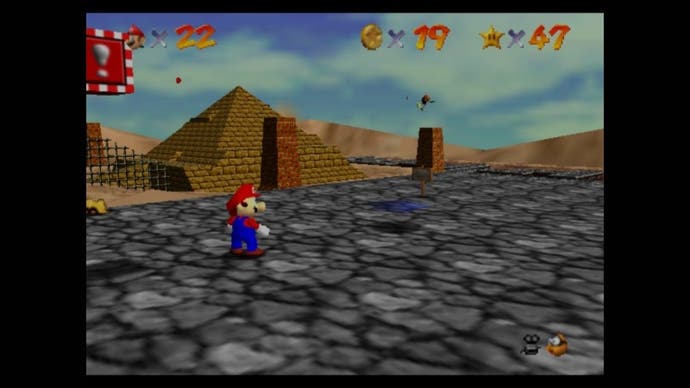
I said Mario has always been about momentum and, while that's true of the 2D games, Mario 64 felt like a true step forward because it was a much more complete and pure expression of this. You don't ever have to stop, and the controls contain countless deliberate quirks to keep movement going at any cost. I grew up with and loved the Nintendo 64, but there's almost no game on that system I'd choose to play now. This week I've acquired more than half the stars on Super Mario 64, and you'd better believe Bowser's days are numbered. Nostalgia wears off after five minutes with an old game; this is something else.
Perhaps it is that, where many games focus on communicating with the player, Shigeru Miyamoto's games have a different angle. Super Mario 64 isn't 'about' anything: it doesn't have a message, it doesn't care what order you do things in, and it doesn't mind if you want to beat Bowser after collecting just 70 of 120 stars. Super Mario 64 is about creating a space for expression, where a player can get lost in the joy of motion and, through this, be delighted by finding new things. It is about creating a world full of secrets, offering some clues, and then letting every single player discover everything for themselves.
I once asked various developers about their experiences with Mario, and this was Platinum Games' producer Atsushi Inaba's response to a question about their popularity."It's because of how much love Mr. Shigeru Miyamoto has towards the characters he created and raised," says Inaba. "This means that every game Mario appears in has continued to be of very high quality. These titles also quickly endear themselves in the hearts of children, and these children continue to love Mario even as they grow older."
The last line always struck me as a core truth about the Mario games, and Super Mario 64 in particular. Our childhood feelings and memories feel so enormously powerful because our mental world then was smaller. Super Mario 64 is a game designed by a genius to make even the dullest player feel special - a work of craftsmanship built with a pure generosity of spirit. It has hundreds of tiny discoveries, and is built so the player makes them by playing. Which is why the industry could still learn an awful lot from Super Mario 64, nearly 20 years after Nintendo made it.
